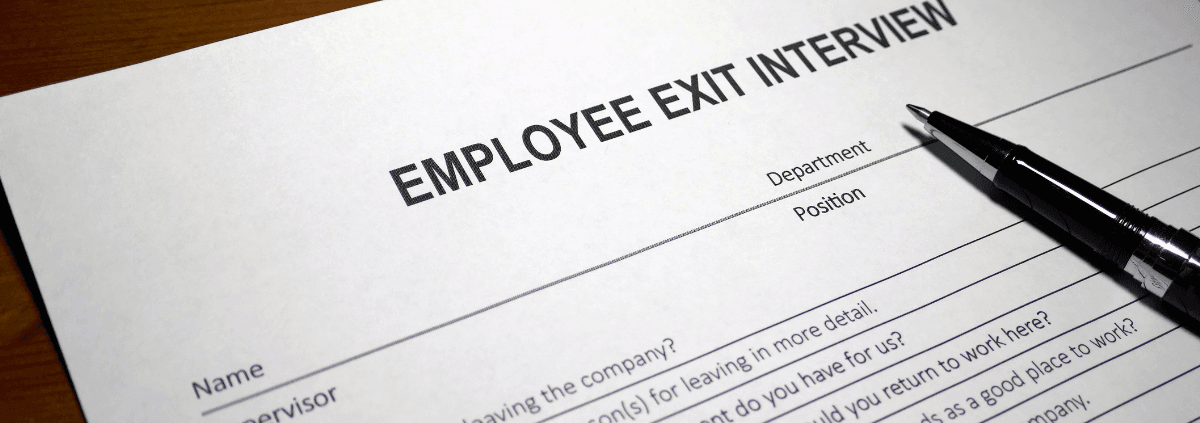A SHORT GUIDE TO CONDUCTING AN EXIT INTERVIEW
People move jobs a lot. In Australia, the average tenure in a job is just 3.3 years. And that’s not good news for employers. In a tight recruitment market, retention is key. Now, there are many ways to keep hold of valued employees. Where do exit interviews fit into the mix? After all, your employee is leaving, not staying. What’s the point? Well, your departing employee may turn out to be a useful source of information about what is positive – and what isn’t – in your organisation. An exit interview can help you capture important feedback and then use it to make improvements that matter to remaining and future employees. It’s a vital ingredient in your retention strategy.
Here’s a short guide to conducting an exit interview.
When should you conduct an exit interview?
Ideally, you should look at conducting an exit interview on an employee’s last day, or in the days following their exit. They are likely to be more forthcoming with information towards the end of their tenure or when they’ve left the company.
Who should conduct the exit interview?
It’s a good idea for the interviewer to be at least one step removed from the employee. Aim for a senior HR representative, a supervisor from another department, or an external consultant. An employee may well open up more with a neutral third party than with their direct supervisor. Keep it low key. One-on-one discussions tend to be a preferred format and can help to put the employee at their ease.
What should you cover in an exit interview?
First, you should inform your departing employee that the purpose of the interview is to gain honest feedback that will be used to make improvements within the organisation. At the same time, you’ll want to reassure them that the information they provide will only be shared with senior management and HR.
Following a structured set of questions is a great way to gather meaningful information and to ensure consistency in the interview process. In order to design a template that works for you, think about what you are wanting to find out from the interview. Questions could include:
- Why did you decide to look for another opportunity? [Did you look at options internally?]
- What were the positive aspects of your role? [Can you name three?]
- What were the negative aspects of your role?
- Did you feel valued in your role/in the organisation? [By your supervisor/senior management?]
- Did you have access to adequate training and resources to do your job? [What would you have liked to have?]
- Can you describe your working relationship with your supervisor/co-workers?
- What improvements can the organisation make? [Can you name three things that would make this a better place to work?]
- Do you have any concerns about the organisation?
- Would you return to work with us again in the future? [If not, why not?]
- Is there anything else that you would like to add?
Sometimes, employees may not provide much information upfront, so you may find it useful to include a few prompts after your questions, as in the above examples. But bear in mind that the idea is not to grill them to the point of annoyance, but to provide an opportunity to receive valuable feedback.
Next steps
Rather than tucking the exit interview away in a file on your laptop, you may find it helpful to discuss feedback with the senior management team and/or HR. Compare exit interviews to establish if there are any patterns. What positive aspects have been highlighted? What negative aspects have been raised? Then, work on them. Build on the positives, communicate them internally and externally. Analyse the negatives and consider ways to improve them. Your departing employees may never come back (although they might!), but you’ll be making your organisation a better place for the future.
For more recruitment and retention advice, contact the professional team at Optimal Recruitment today on info@optimalrecruitment.com.au or 02 8416 4181.










